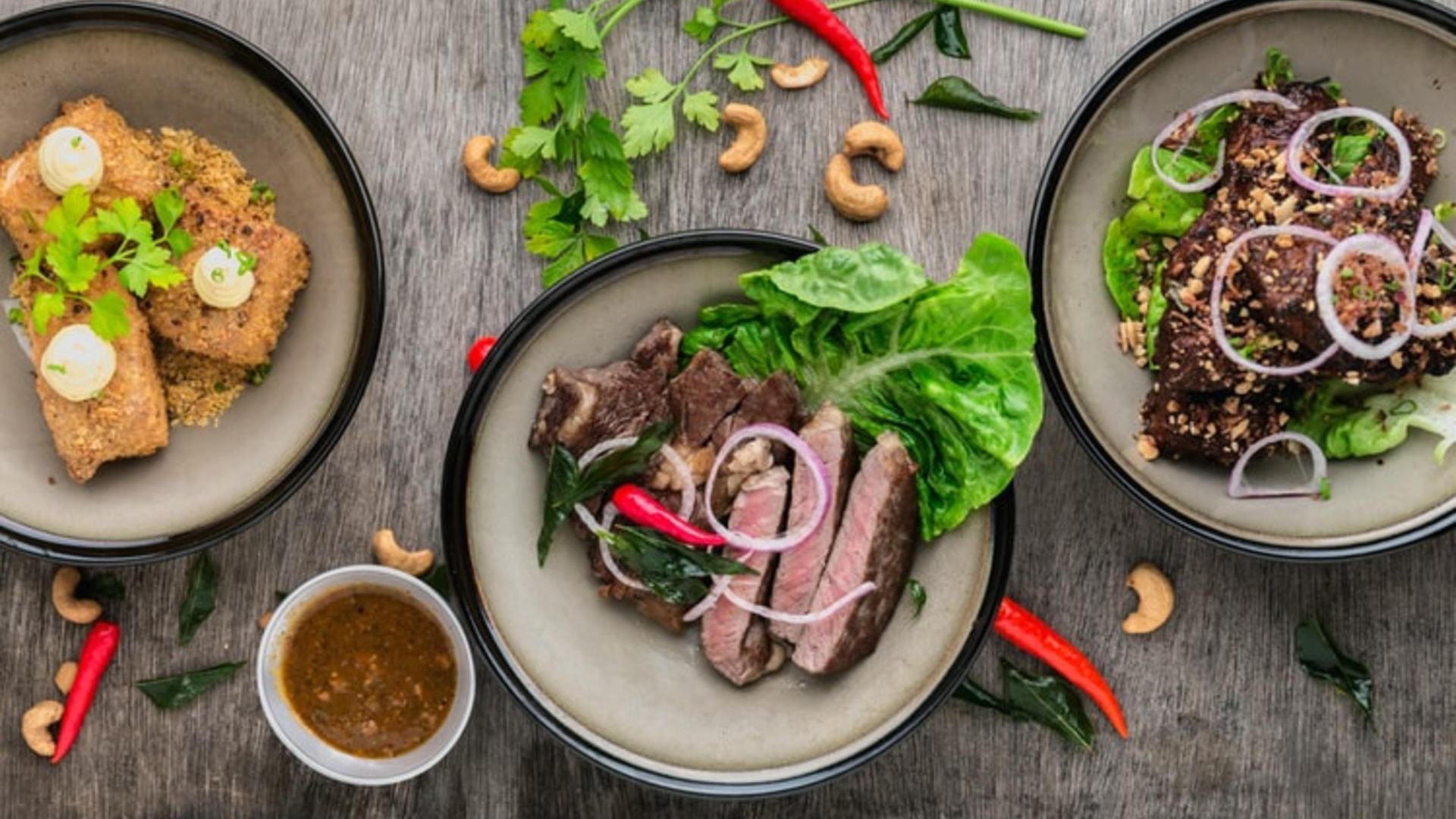For food, people often wonder what the difference is: Malaysia vs Singapore. Both are often confused with one another. This doesn’t surprise me, because both countries are neighbors and have influenced one another regarding many aspects, including cuisine. However, although there are cuisines with the same name in both countries, there are often some significant changes in their respective versions that make them unique. Let’s explore them together, shall we?
Malaysia vs Singapore: Bak Kut Teh
Malaysia

Malaysia has several versions of bak kut teh available to cater to anyone’s palate.
However, the most popular version is the Hokkien-style bak kut teh, which involves cooking pork and bones with herbs, spices, and light and dark soy sauce for hours.
Singapore
Singapore’s version of bak kut teh follows the Teochew cooking style, where garlic and pepper are used to boil the pork ribs and bones. These ingredients give the soup a lighter broth with a peppery taste, similar to Chinese soups offered in restaurants.
Malaysia vs Singapore: Hainanese Chicken Rice
Malaysia

Malaysia has its version of chicken rice, and they call it the Chung wah chicken rice ball.
The dish is very popular in Melaka and is similar to Japan’s onigiri, but instead of having the chicken inside the rice ball, we use it as a topping.
The rice balls also have a smoky but flavorful taste that works well with the chicken.
Singapore
Singapore is renowned for its Hainanese Chicken Rice, especially in its hawker centres. Brought to the country by Chinese immigrants from Hainan province, the dish features poached chicken with seasoned rice, topped with cucumber garnishes and garlic chilli sauce.
Malaysia vs Singapore: Hokkien Mee
Malaysia

Malaysia’s Hokkien Mee features stir-fried noodles with dark soy sauce and topped with prawns, pork belly, crispy pork lard and fishcakes.
Wok hei (the fragrance of frying in the wok) is also very strong in this dish, adding additional flavor.
Singapore
For Singapore, its version of the dish is soupier and has a lighter appearance. Two types of noodles are used for this dish, bihun and egg noodles, and it comes with prawns and squid toppings. People can add lime and a dash of sambal belacan (minced chili) to give it that kick with a tangy taste.
Malaysia vs Singapore: Nasi Lemak
Malaysia

In Malaysia, nasi lemak is rice cooked with sambal, peanuts, coconut milk, fried anchovies, egg and cucumber and then wrapped with banana leaves.
For some, they would add a variety of toppings to make it a complete meal like fried eggs, beef or chicken rendang, fried chicken or fish, nasi lemak and sambal fish or squid.
Singapore
Singapore’s nasi lemak is similar to Malaysia, but the sambal they use is much sweeter with a spicy kick. The rice is also colored with pandan leaf juice, which adds additional flavour to the rice. Singaporeans pair their nasi lemak with chicken drumstick, fish cakes, curried vegetables, luncheon meat, chicken hotdog or otak-otak.
Malaysia vs Singapore: Laksa
Malaysia

Every region in Malaysia has its version of laksa that varies in how they are prepared and the spices used to make it pop.
Its most popular version, the Penang Asam laksa, has a sour soup base with tamarind and mackerel as its main ingredients.
The soup is made with chilli, lemongrass and galangal and poured into thick white noodles. Sometimes, it is served with mint, onions, torch ginger flower, pineapple slices and shrimp paste as toppings.
Singapore
We know Singapore’s laksa as Katong Laksa, and it features ingredients you can find in laksa lemak. It is a soup made with dried shrimp and coconut milk, giving it a sweet flavor. They pour the soup into the noodles, which they cut into bite-sized pieces for easier dining. They then top it with fishcakes, prawns, and cockles.
With so much variety of food choices, Singapore and Malaysia are truly a foodie’s paradise. As a Singaporean living in Malaysia, I can say I am fortunate to have the best of both worlds. Come and follow me on my journey of discovering the exciting world of an expatriate, and if you’re like to join the conversation, become a free member here at TCI.
by: Kally Tay


